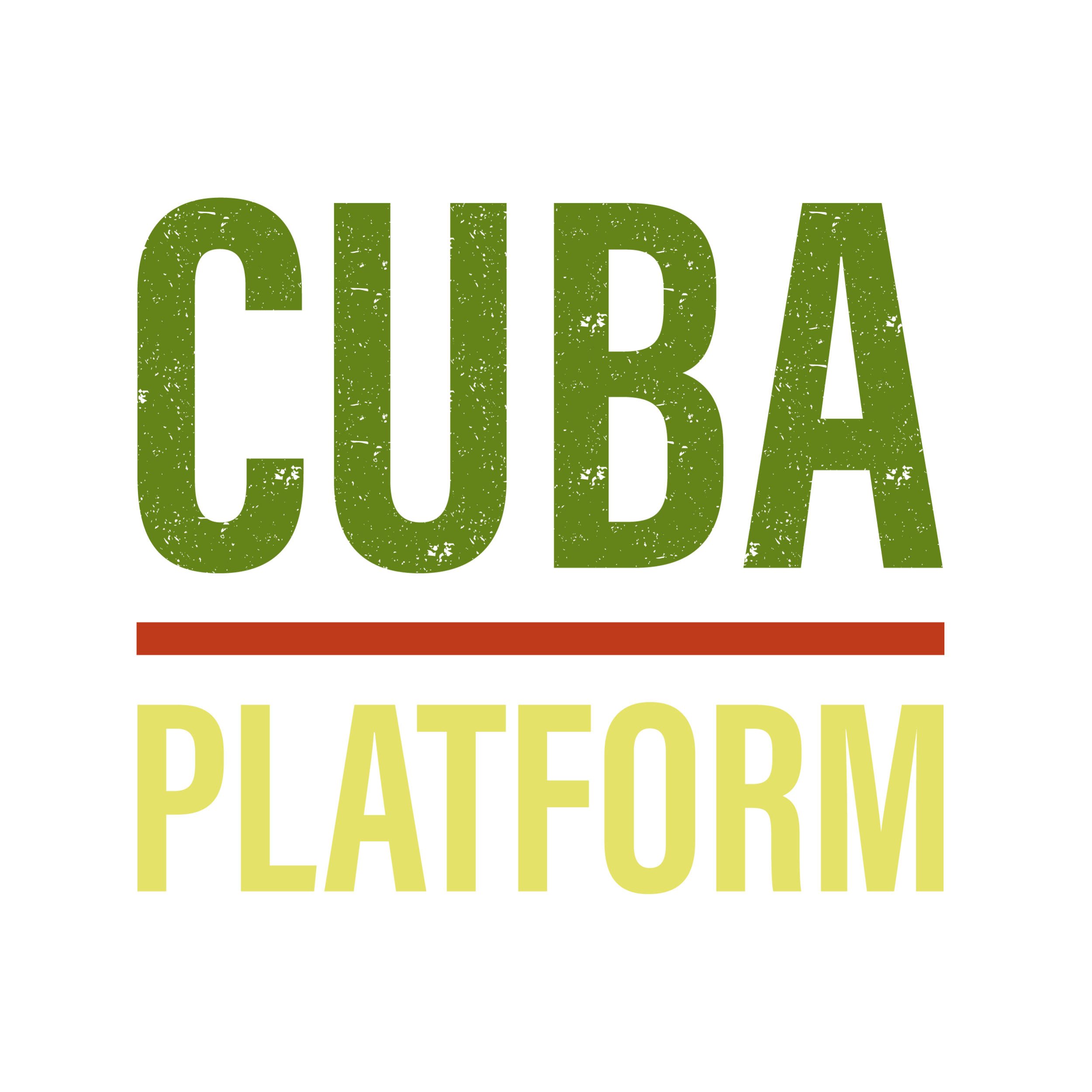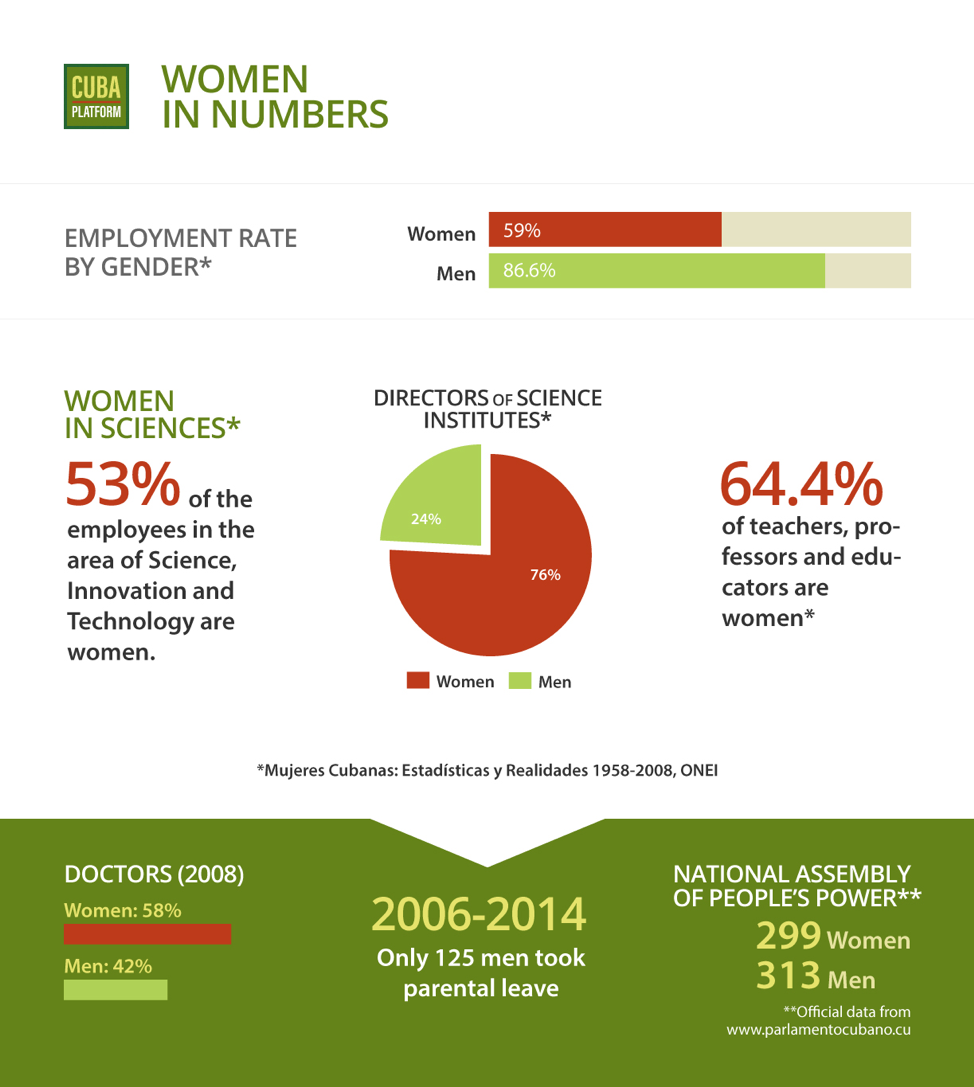The Federation of Cuban Women
Women and the Cuban Revolution: The Federation of Cuban Women
From the start of the Cuban Revolution, the Cuban leadership has made concerted efforts to advance the status of women and increase their social and political participation, particularly through increased access to, educational opportunities and employment. As explicitly stated in Article 44 of the Cuban Constitution, drafted in 1976, “The state guarantees women the same opportunities and possibilities as men in order to achieve women’s full participation in the development of the country.”
Organization and Objectives
In 1960, Fidel Castro and Vilma Espin—a chemical engineer, feminist, and leader of the revolutionary movement in the eastern provinces—founded The Federation of Cuban Women (FMC, for its acronym in Spanish) to advance women’s rights, gender equalization, and reproductive health rights. Its main goals were to incorporate women into the work force and to promote their participation in the process of social and economic change.
The organization has a pyramidal structure with local, municipal, provincial, and national levels of representation and leadership. Its National Directorate is composed of a National Committee and a Secretariat, responsible for enforcing the agreements adopted at each level every five years at the meeting of the Congress, the highest governing body of the Federation. The National Committee brings together women from all social backgrounds, including women with decision-making positions in key ministries and members of the Communist Party of Cuba, trade unions, and other social organizations.
The President of the FMC is a member of the Council of State and directs the Commission for Attention to Women, Children, and Youth of the National Assembly of People's Power, which is tasked with supporting the rights of these groups within the actions of Cuba’s legislative parliament.
Achievements
The FMC has worked toward various advancements for women, including the adoption of Cuba’s Family Code and the feminization of higher education (the increasingly high ratio of women to men in universities and professional fields). The Family Code, adopted by Cuba in 1975, covers marriage, divorce, marital property relationships, recognition of children, obligations for children’s care and education, adoption, and tutelage. It states that marriage is constituted on the basis of equal rights and duties of both partners. The significance of the Family Code is not that it creates a legally enforceable duty to share housework; rather, it codifies a societal norm and has become a tool for education and change.
The Federation has also been credited with reviving sociological research in Cuba; it has supported new research on women’s status, and has also worked to incorporate more women researchers (both Cuban and foreign) into social research programs. In 1991, a group of Cuban academics and the Federation of Cuban Women worked together to create the Women’s Studies Program at the University of Havana, and also launched women and family programs in several other Cuban universities and a Center for Research on Women within the FMC. The Federation also created Orientation Houses for Women and Families at municipal levels, which assist vulnerable women and attend to issues such as adolescent pregnancy, alcoholism and violence, and childcare centers for children of working women.
The 2008 report Cuban Women in Figures showed that women accounted for 65% of the total university graduates, a phenomenon which Cuban scholars call “the feminization of education and the professions.” Additionally, 45.7% of the total graduates of professional technical schools, and 53.4% of the total teaching staff at institutes of higher education are women.
Contemporary FMC
Today, the FMC is recognized as both an official mechanism for the incorporation of women’s issues into national politics and a non-governmental organization (NGO), because while its membership includes the vast majority of Cuban women (85.2% of all eligible women over 14), it is not government financed.
The FMC leaders, as policy insiders, negotiate with governmental actors and state institutions for concessions, acknowledgments, and adaptations of existing law. Although some have criticized the FMC for, for instance, “having a very limited range of discursive possibilities and efficacy,” other scholars assert that “to dismiss the FMC as a passive appendage of the government is to fail to understand the complexity and strength of women's agency and political participation.”
The organization coordinates the work of 81,260 volunteer social workers and 78,624 health brigade members who support mass vaccination campaigns and prevention against dengue fever, influenza AH1-N1 and HIV/AIDS at a neighborhood level. FMC also continues to manage the Houses of Orientation for Women and the Family.
The historic power of the FMC has been its effectiveness in mobilizing women and creating solidarity, and it has achieved significant change in Cuban society, even though various social and cultural manifestations misogyny, machismo, and domestic violence are still present on the island.
Sources
Download a PDF with sources for this report here.

